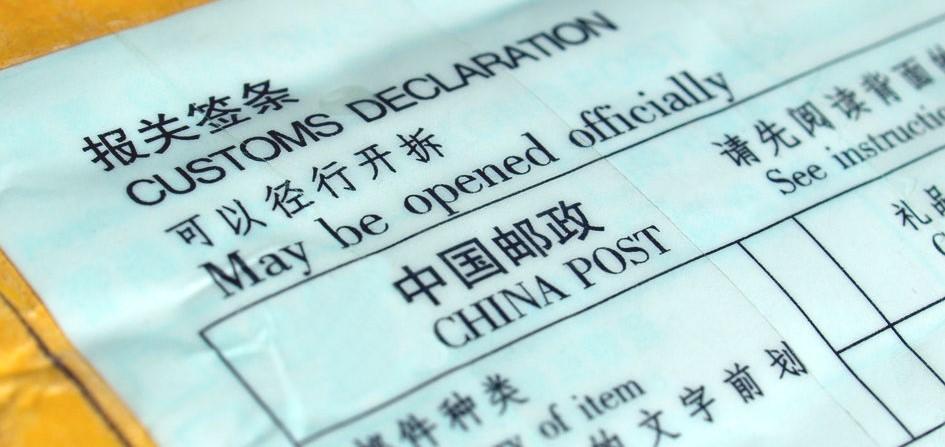As Article 7 of the Customs Code clearly lays out: “Goods brought into the customs territory are subject to customs duties and must be assessed in accordance with this Law and the Customs Tariff Law”. The declaration of goods at the border happens in various ways and can sometimes be costly and time-consuming.
At its meeting in mid-February 2017, the Swiss Federal Council sent a clear message regarding the digitization of customs administration. Supported by an investment of 400 million Swiss francs, all applications, procedures and processes are to be simplified, digitized and implemented in a new IT infrastructure by 2026. This will lead to more flexibility and faster procedures at the border for people and companies. It will also enable customs to carry out simpler risk analyzes and checks. It is a fact that this planned change will give more responsibility to companies and will also transfer more of the customs work to them. But the planned digitization cannot change certain established tenets: goods will still have to be declared when crossing the border.
A number for everything
In the language of customs, all goods are divided into numbers. Within this internationally harmonized system, a specific customs tariff number is applied to each product. This is also used as the basis for customs declarations, assessment of possible customs duties and serves as a calculation basis for the application of free trade agreements. The correct tariff classification of products is a major challenge for many companies and often causes many different customs problems.
The allocation of a customs tariff number can sometimes lead to strange situations. Let’s not forget Federal Councilor Merz’s laughing fit during his much shared ‘Bü-Bü-Bünderfleisch’ speech, which was all about the not entirely simple tariff classification of spiced meat. In the textile sector, the customs administration often has to distinguish whether imported clothing is intended for men or women. This distinction, which is very important from the point of view of customs, is due to the historical fact that men's clothing incurs a lower customs tariff; unlike the rest of the world, duty collection in Switzerland is based on weight. Men's clothes intended for working in fields were much heavier than women's clothes intended for housework.
Import duties are reduced or completely abolished if a free trade agreement is in place between the country of production and the destination country. Switzerland currently has more than 30 agreements, and more are likely to follow in the near future. But they are not applied automatically. In order to take advantage of these (voluntary) benefits, various steps need to be taken. It is especially important to determine a preferential origin and whether there is formally correct proof of this originating status. So ‘free trade’ is not quite as free as the term would suggest.
The big difference between importing and buying online
When travelling, a private individual may import goods with a value of 300 Swiss francs duty-free without the need for a customs declaration. However, various restrictions and duty-free allowances apply for food, alcohol and tobacco. If goods are not personally brought across the border but instead ordered via an online portal and delivered by courier, then completely different regulations apply. All deliveries must be registered with the customs office by the customs service provider (courier, post office, etc.) and declared accordingly. Importing into Switzerland incurs additional costs when buying online from abroad: these include shipping, customs clearance and customs inspection costs in addition to VAT of 8% on the total amount. Changes will be introduced in this regard from January 1, 2018. The revised VAT law stipulates that all foreign companies with business activities in Switzerland must enter themselves into the Swiss VAT register. Thus, in future, goods sold online will probably be imported into Switzerland by retailers and no longer by private individuals (this can lead to a reduction in customs clearance costs).
Pending VAT decisions
It is quite possible that the current VAT rate will also be reduced from 8% on January 1, 2018. The temporary increase of 7.6% to 8% only applies until the end of this year (temporary additional financing for the disability insurance). However, there will be an increase of 0.1% (referendum decision to finance the development of the railway infrastructure (Finanzierung und Ausbau der Bahninfrastruktur, FABI)). 0.3% will only be added again if people vote yes to the pension reform in autumn (this would then mean the current 8% again). Consequently, it is up to us what the VAT rate will be next year.
Various other changes apply for companies. From around March 2018, assessment decisions for the import of goods, i.e. customs receipts for imported goods, must also be obtained electronically (in the past, these were issued in paper form by customs authorities). In future, the Swiss Federal Customs Administration will stop printing and sending the assessment decisions as part of the austerity measures.
Swiss companies should therefore already be thinking about how they intend to deal with this in future and adapt their systems if necessary.
For all customs processes to run smoothly and to benefit from the simplifications and reduced customs rates, companies need to build up customs expertise. One thing's for sure: customs borders are not going to go away in Switzerland and beyond, and there will be no borderless imports in the foreseeable future.



